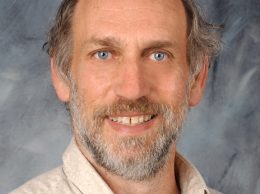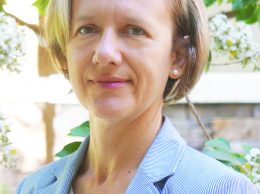Gov. Brown talks high-speed rail, energy
During Gov. Jerry Brown’s first term as head of the state, he green-lighted a plan for a high-speed rail. Thirty years later, the statewide rail project remains a priority for Brown — and it’s one way the California government is working to make the state green.
“What’s really interesting right now is to look back at what I did during my first term and see what it looks like now,” said Brown, who spoke at the Wall Street Journal’s Eco:nomics conference at Bacara Resort & Spa on March 23. “I got very interested in energy 30 years ago … and I’m still working hard on a very bold high-speed rail plan.”
Brown said the high-speed rail, which would span almost all of California and travel much faster than other trains, is much more energy efficient — and cost efficient — than air or car travel. “It’ll cost a lot of money to build, it’s a big deal, and there’s a lot of political interest involved … but economically and in terms of quality of life, it makes sense. It looks like we’ll start building it at the end of the year.”
Robert Thomson, the managing editor of the Wall Street Journal and moderator of the conference, said California was at the forefront of the green movement when it gained momentum in the 1970s. During Brown’s first term as governor from 1975 to 1983, he introduced a 55 percent tax credit for solar collectors and a 35 percent tax credit for conservation improvements.
The state government also introduced new efficiency standards for buildings during that period. “One thing that has really lasted is the efficiency standards. California adopted strenuous standards, and as a result, the state has saved $50 billion in energy costs, lots of energy jobs were created and we set the pace for the nation,” Brown said.
Although he said it was easier to introduce green programs when there was a budget surplus of $6 billion rather than the current $26 billion deficit, the governor said there are many environmental problems he wants to tackle. California has led the way in renewable energy, and “we want to introduce as much renewable energy as possible — but with as little sticker shock as possible.”
Among other environmental projects Brown plans to take on are climate change and hydraulic fracturing, or “fracking”.
When Thomson asked Brown how he envisions his legacy, the governor said he doesn’t think about it. “When you say ‘legacy,’ it sounds like I’m going to go away,” he said. “I’m only in the second year of my third term. I’ve got a long time to go and I want to deal with a lot of things.”













